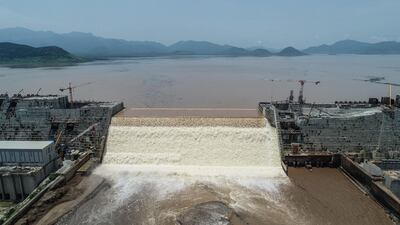






























Nile dam second filling likely due to rainfall, say experts
A Sudanese official told 'The National' that Ethiopia had not begun the second filling of the Grand Ethiopian Renaissance Dam

Hamza Hendawi
May 27, 2021
- Listen in English
- Listen in Arabic
































May 27, 2021